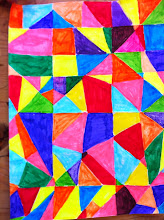Mona Hatoum is a Palestinian woman from Lebanon. In 1975 at the young age of 23, Hatoum went to visit London, England. During her stay sudden civil war in broke out in Lebanon, and she was stranded in London as a result. The restricted and limited contact with her home instilled within her fear for her family's safety. Hatoum chose to stay and live in London where she has remained for most of her life. It was here that she decided to study art.
After her graduation in 1981, Hatoum first explored the realm of performance art in the early 1980s. Beginning in the mid 1980s, she has experimented with other art spheres including installations, videos, sculpture and photography. Her cumulative body of work encompasses a diverse medley of mediums. Much of her work utilizes materials and objects that normally generate associations with comfort, intimacy and familiarity. Yet she twists and distorts these into pieces which present the idea of bodily harm or danger to an individual. Her use of industrial materials, along with her style, resemble the Minimalist and Conceptual work first introduced in the 1960s. The Museum of Contemporary Art in Chicago was the site of Mona Hatoum's first major museum exhibition in the US in 1997. Her work is said to be drawn from both her Lebanese exile as well as her awareness of racial and gender issues. They possess a personal and a political side. She insists that her viewers follow their own instinctual reactions, while still enabling them to see her perspective. Hatoum's recent exhibition at the Massachusetts Museum of Contemporary Art from March 2001-February 2002 dealt intimately with her ideas concerning the domestic and possibly female sphere. Many art critics believe her dark depictions of domesticity relate directly to her Palestinian and Lebanese identities and her condition in exile. Hatoum's strong and vivid work is successful not only in its juxtaposition of her very different cultures and ideologies, but also in its ability to evoke an emotional reaction from her audience. (Contemporary Women Artists: http://www.skidmore.edu/academics/arthistory/ah369/contemporarysite.htm)
After her graduation in 1981, Hatoum first explored the realm of performance art in the early 1980s. Beginning in the mid 1980s, she has experimented with other art spheres including installations, videos, sculpture and photography. Her cumulative body of work encompasses a diverse medley of mediums. Much of her work utilizes materials and objects that normally generate associations with comfort, intimacy and familiarity. Yet she twists and distorts these into pieces which present the idea of bodily harm or danger to an individual. Her use of industrial materials, along with her style, resemble the Minimalist and Conceptual work first introduced in the 1960s. The Museum of Contemporary Art in Chicago was the site of Mona Hatoum's first major museum exhibition in the US in 1997. Her work is said to be drawn from both her Lebanese exile as well as her awareness of racial and gender issues. They possess a personal and a political side. She insists that her viewers follow their own instinctual reactions, while still enabling them to see her perspective. Hatoum's recent exhibition at the Massachusetts Museum of Contemporary Art from March 2001-February 2002 dealt intimately with her ideas concerning the domestic and possibly female sphere. Many art critics believe her dark depictions of domesticity relate directly to her Palestinian and Lebanese identities and her condition in exile. Hatoum's strong and vivid work is successful not only in its juxtaposition of her very different cultures and ideologies, but also in its ability to evoke an emotional reaction from her audience. (Contemporary Women Artists: http://www.skidmore.edu/academics/arthistory/ah369/contemporarysite.htm)


0 Comments:
Post a Comment
<< Home